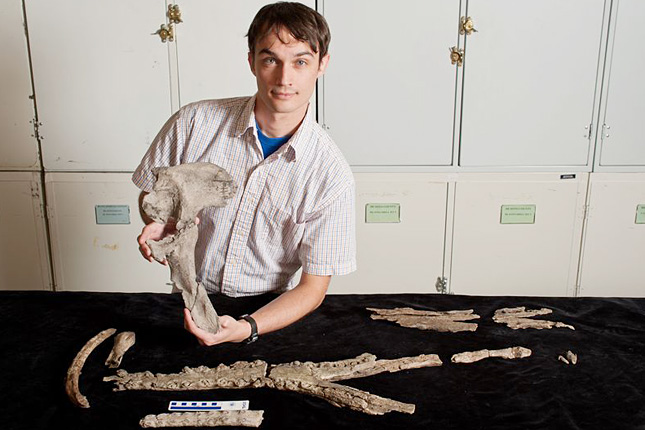 |
| Acherontisuchus and Titanoboa in their natural habitat |
Yet scientists now believe that that there were creatures that could have contended with such a snake; specifically a crocodile. The largest crocodilian that ever lived was a late Cretaceous creature called Deinosuchus. It was a similar length to Titanoboa at around 12 metres long. With a bite in the league of Tyrannosaurus, this creature was a dinosaur killer. It died out during the Cretaceous extinction, but a new discovery of a fossil crocodile suggests that this group of giant predators may have had one last hurrah before becoming smaller and less impressive.
 |
| Alex Hastings displays the remarkable fossils of Acherontisuchus gaujiraensis |
'The younger individuals were definitely not safe from Titanoboa, but the biggest of these species would have been a bit much for the 42-foot snake to handle' said Alex Hastings. 'This one is related to a group that typically had these long snouts. It would have had a relatively similar diet to the other (coastal) species, but surprisingly it lived in a more freshwater environment.'
'We're facing some serious ecological changes now,' said Christopher Brochu, an expert on ancient crocodilians. 'A lot of them have to do with climate and if we want to understand how living things are going to respond to changes in climate, we need to understand how they responded in the past. This really is a wonderful group for that because they managed to survive some catastrophes, but they seemed not to survive others and their diversity does seem to change along with these ecological signals.'